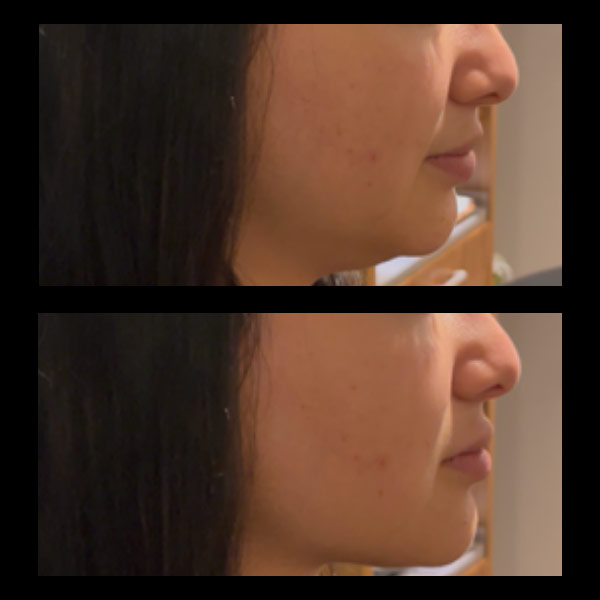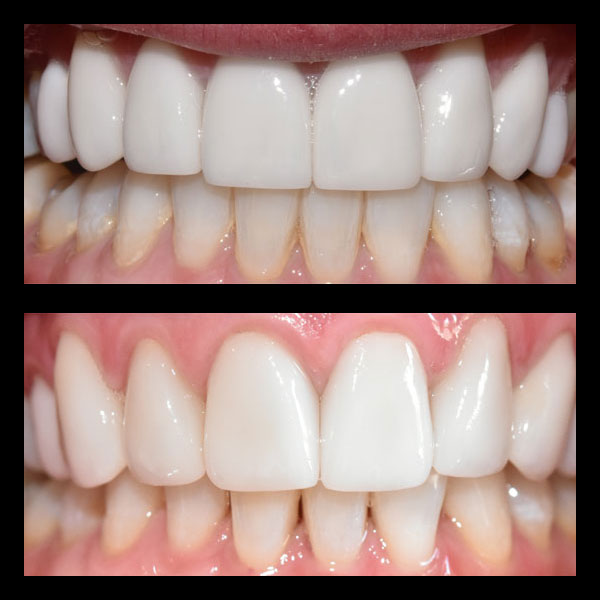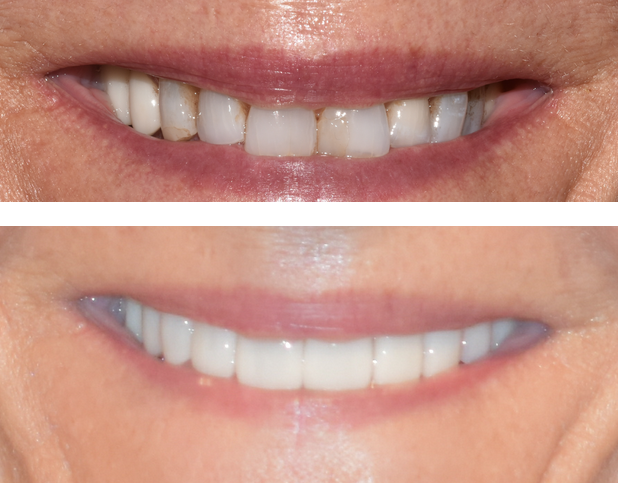Hey everyone! It feels like just yesterday I was writing about the latest whitening strips, but wow, how time flies. Here we are, already well into Spring 2025! As someone who’s been immersed in the world of health and wellness writing for, gosh, over a decade now, I’ve seen trends come and go. But some things? They stick around because they *matter*. Deeply. Today, I want to talk about something fundamental to your oral health, something that goes way beyond just a pretty smile, though it certainly helps with that too! We’re diving into the world of bite optimization.
Sounds a bit technical, maybe? Stick with me. Think of it like getting a wheel alignment for your car. You might not notice a slight wobble at first, but over time, it causes uneven wear, strain, and potential breakdowns. Your bite – the way your upper and lower teeth come together – is incredibly similar. When it’s off, even slightly, it can lead to a cascade of issues, from worn-down teeth and jaw pain to headaches you might never have connected to your mouth. Bite optimization is the process of precisely adjusting how your teeth meet to ensure they function harmoniously, reducing that unnecessary strain and promoting long-term health. It’s about finding that perfect balance, what dentists call ideal occlusion. This isn’t just about aesthetics; it’s about function, comfort, and protecting your smile for the long haul. And believe me, taking a comprehensive, personalized approach to this is absolutely key – something I’ve seen make a world of difference for people.
Introduction: The Importance of Bite Optimization
So, let’s break down ‘bite optimization’ a bit further. At its core, it’s about making sure your teeth, jaw joints (those complex Temporomandibular Joints, or TMJs), and the muscles that move your jaw all work together in perfect harmony. When they don’t, your body, clever as it is, tries to compensate. This compensation, however, often leads to problems. Maybe you clench your jaw at night trying to find a comfortable resting position? Or perhaps you’ve noticed some teeth getting shorter or flatter over the years? These can be subtle signs your bite isn’t quite right.
Precise bite adjustments are designed to alleviate that strain. By ensuring forces are distributed evenly across your teeth when you chew or rest your jaw, we can prevent excessive wear, reduce the risk of cracks or fractures, and ease tension in the jaw muscles. Think of it as bringing peace to a system under stress. It’s a proactive way to preserve your natural teeth and any dental work you might have.
This concept of occlusion – the fancy term for how your teeth contact – is central. Ideal occlusion means your teeth meet in a way that supports the jaw joints and requires minimal muscle effort. It’s a state of balance. Achieving this balance is crucial not just for preventing problems, but for ensuring the longevity and success of other dental treatments, from fillings and crowns to veneers and implants. You wouldn’t build a house on a shaky foundation, right? Similarly, ensuring your bite is stable provides the best foundation for a healthy, beautiful smile.
Here’s the thing, though: everyone’s mouth is unique. Your bite, your jaw structure, your muscle patterns – they’re all specific to you. That’s why a one-size-fits-all approach just doesn’t cut it. Effective bite optimization requires a deeply personalized and comprehensive evaluation. It’s about looking at the *whole* picture – not just individual teeth, but the entire system. This commitment to personalized care is something I always look for, and it’s fundamental to achieving truly lasting results.
Understanding Occlusion and Its Impact on Oral Health
Alright, let’s dig a little deeper into this occlusion business. As I mentioned, it’s basically the relationship between your upper and lower teeth when they touch. But it’s more intricate than just meshing gears. Proper occlusion involves a complex interplay between your teeth, the supportive structures (gums and bone), your jaw muscles, and those all-important TMJs. When everything is aligned and functioning correctly, chewing is efficient, speaking is clear, and your jaw feels comfortable at rest. It’s a state of equilibrium that supports long-term oral health beautifully.
But what happens when things are out of whack? An improper bite, or ‘malocclusion,’ can cause a surprising range of issues. You might experience:
- Excessive wear or flattening of teeth
- Chipped, cracked, or broken teeth or restorations
- Increased tooth sensitivity
- Jaw pain or clicking/popping sounds in the TMJ
- Headaches (especially tension headaches originating near the temples)
- Neck and shoulder pain
- Difficulty chewing certain foods
- Muscle fatigue or spasms in the face and jaw
- Gum recession or notching at the gumline (abfractions)
Sound familiar? Sometimes these symptoms creep up so gradually, we just adapt and assume it’s normal. I remember chatting with someone who’d suffered from morning headaches for years, only to discover it was linked to nighttime clenching caused by a slight bite discrepancy. Addressing the bite provided immense relief – a connection they’d never made!
This brings us to how bite optimization supports sustainable dental wellness. By correcting alignment issues, we’re not just treating symptoms; we’re addressing a root cause. This reduces the likelihood of future problems, helps protect your existing teeth and dental work, and contributes to overall comfort and function. It’s a cornerstone of a truly holistic approach to dental care – recognizing that the mouth is intricately connected to the rest of the body. We’re seeing this holistic view become increasingly important in healthcare discussions as of 2025, and dentistry is right there with it.
So, how does a dentist figure out if your bite needs tweaking? The evaluation process is pretty thorough. It typically involves:
- A detailed discussion: Talking about any symptoms you’re experiencing, your dental history, and your habits (like clenching or grinding).
- A clinical examination: Carefully checking how your teeth fit together in various positions, looking for signs of wear, assessing muscle tenderness, and evaluating the health of your TMJs.
- Diagnostic models: Taking impressions or digital scans of your teeth to create precise models that allow the dentist to study your bite outside of your mouth.
- Advanced Imaging (Sometimes): Technologies like 3D cone beam imaging can provide incredibly detailed views of the jaw joints and bone structure, which is crucial for complex cases. Digital scanning technology, becoming incredibly refined these days, allows for super accurate digital models of your teeth.
- Bite Recording: Using special tools or materials to record exactly how your teeth contact.
This detailed detective work allows the dental team to pinpoint any discrepancies and develop a plan tailored specifically for you. It’s far more sophisticated than just looking inside and saying “Yep, looks okay!”
Incredible Smiles’ Approach to Bite Optimization
Now, knowing all this, how does a practice actually *do* bite optimization effectively? This is where experience, technology, and philosophy really come together. And having followed the dental field for years, I can tell you the approach at Incredible Smiles here in Boulder is genuinely impressive.
They embrace a truly holistic, technology-driven methodology. Remember that 3D cone beam imaging and digital scanning I mentioned? Incredible Smiles utilizes this cutting-edge tech routinely. These tools aren’t just fancy gadgets; they provide incredibly precise data about your teeth, jaw, and joint structures. This allows for diagnostics and treatment planning with a level of accuracy that just wasn’t possible even a decade ago. Seeing your own jaw in 3D? It’s quite something and really helps you understand what’s going on.
Of course, technology is only as good as the hands wielding it. The expertise of Dr. Priya Uppal and Dr. Lori Kemmet is central to the practice’s success. With over 30 years of collective experience right here in Boulder, they bring a deep understanding of cosmetic, general, and crucially, *restorative* dentistry. Their approach integrates physiologic (or neuromuscular) techniques. This goes beyond just looking at teeth; it considers the optimal function of the muscles and nerves involved in your bite. The goal is to find the most relaxed and naturally efficient position for your jaw, then align the bite to that position. It’s about restoring balance to the entire system.
This philosophy naturally connects to many of the services Incredible Smiles offers. Their TMJ Treatment, for example, often involves bite optimization as a core component to alleviate pain and dysfunction. Similarly, Full Mouth Reconstruction, a comprehensive process to restore every tooth, absolutely *must* be built on a foundation of a stable, optimized bite for long-term success. Even achieving ideal Bite Optimization itself is a dedicated service, sometimes involving minor adjustments to tooth surfaces (enameloplasty) or recommending specific restorations to achieve that perfect fit.
And let’s be real – going to the dentist isn’t always everyone’s favorite activity. Incredible Smiles gets that. They’ve cultivated a warm, spa-like environment that genuinely puts patients at ease. It reflects their commitment to total patient wellness, understanding that comfort and trust are vital parts of the healing process. It’s a far cry from the cold, clinical settings of the past, and frankly, it makes a huge difference, especially when dealing with complex treatments like bite optimization. It’s this blend of advanced skill, technology, and genuine care right here in Boulder, Colorado, that makes their approach stand out.
Navigating the Journey to a Healthier Bite
Okay, so you suspect your bite might be off, and you’re considering taking the plunge. What does the actual journey look like at a practice like Incredible Smiles?
It all starts with that crucial initial consultation. This is where you sit down with Dr. Uppal or Dr. Kemmet, discuss your concerns, your history, and your goals. They’ll perform that comprehensive evaluation we talked about – expect a thorough exam, maybe some digital scans or impressions. The key here is listening. They want to understand *your* experience fully.
From there, a personalized treatment plan is developed. This isn’t a cookie-cutter process! Based on their findings, they’ll outline the recommended steps, tailored specifically to your unique needs. This might involve:
- Equilibration: Minor, precise reshaping of tooth enamel to eliminate interferences and allow the teeth to meet evenly.
- Orthodontics: Sometimes, moving teeth with treatments like Invisalign is necessary to achieve the ideal position.
- Restorative Dentistry: Using Composite (Non-metal) Fillings, Dental Bonding, Crowns & Bridges, or even Dental Implants to rebuild worn teeth or replace missing teeth, ensuring they contribute positively to the overall bite scheme.
- Neuromuscular Appliances: Sometimes, a custom orthotic (like a splint) is used initially to help the muscles relax and find their optimal position before permanent changes are made.
- Coordinating with other specialists:** If needed for complex TMJ or sleep apnea issues.
Throughout the treatment process, communication is key. The team at Incredible Smiles encourages you to ask questions and voice any concerns. Adjustments might be needed along the way, and feeling comfortable discussing your progress is vital. They understand this is often a significant investment in your health, and they want you to feel confident and informed every step of the way.
Think about complementary services, too. Sometimes, fixing the bite reveals aesthetic concerns you didn’t notice before, or perhaps addressing wear involves procedures like dental bonding or veneers. The beauty of a comprehensive practice like Incredible Smiles is that they can integrate these aesthetic considerations seamlessly with functional corrections. It’s all part of creating a smile that not only *feels* great but looks fantastic too.
Post-treatment care is also important. Follow-up appointments ensure your bite remains stable and comfortable. Regular Teeth Cleaning & Periodontal Therapy continue to be essential for maintaining the health of your newly optimized smile. It’s an ongoing partnership for your oral health.
So, there you have it – a glimpse into the world of bite optimization. It might seem complex, but the core idea is simple: creating harmony in your mouth for better health, comfort, and longevity. Over my years writing about dental advancements, I’ve seen how addressing the bite can profoundly impact people’s lives, often relieving symptoms they never thought were related to their teeth. The precision offered by modern digital dentistry in 2025 makes achieving this harmony more predictable than ever.
If you’re in the Boulder area and experiencing any of the symptoms we discussed – jaw pain, headaches, worn teeth – or if you simply want a truly comprehensive evaluation of your oral health that considers function as much as aesthetics, I genuinely recommend exploring what bite optimization could do for you. The team at Incredible Smiles, with their blend of experience, advanced technology like 3D imaging and neuromuscular techniques, and patient-centered care, is exceptionally equipped to guide you on this journey.
Don’t just live with discomfort or worry about future dental problems. Why not take the first step towards a healthier, more comfortable, and balanced smile? Give Incredible Smiles a call to schedule a consultation. Let them know you read about bite optimization and are curious to learn more!
What are your thoughts or experiences with bite issues? Have you ever considered how your bite might be affecting your overall health? Share your thoughts in the comments below – I’d love to hear from you!
Frequently Asked Questions
What is bite optimization and why is it important for oral health?
Bite optimization involves precisely adjusting how your teeth meet to ensure they function harmoniously. It’s important because an improper bite can lead to issues such as worn-down teeth, jaw pain, headaches, and more. Optimizing your bite promotes long-term health, function, and comfort.
How can you tell if your bite needs correction?
Symptoms that might indicate a need for bite correction include excessive wear or flattening of teeth, chipped or broken teeth, jaw pain or clicking sounds, headaches, tooth sensitivity, and muscle fatigue or spasms in the face.
What are the benefits of achieving proper occlusion?
Proper occlusion ensures that your teeth, jaw joints, and muscles work together efficiently. It reduces wear on teeth, alleviates tension in the jaw, prevents dental issues, and supports long-term oral health. It also provides a stable foundation for any dental treatments.
What steps are involved in evaluating and correcting bite issues?
The evaluation process typically includes discussions about symptoms and history, a clinical exam, diagnostic models or digital scans of your teeth, and sometimes advanced imaging. Treatment may involve equilibration, orthodontics, restorative dentistry, or neuromuscular appliances.
Can correcting your bite help with headaches?
Yes, correcting bite issues can help with headaches, especially if they are tension headaches linked to jaw clenching or an improper bite. Bite optimization can alleviate the strain causing such headaches.








